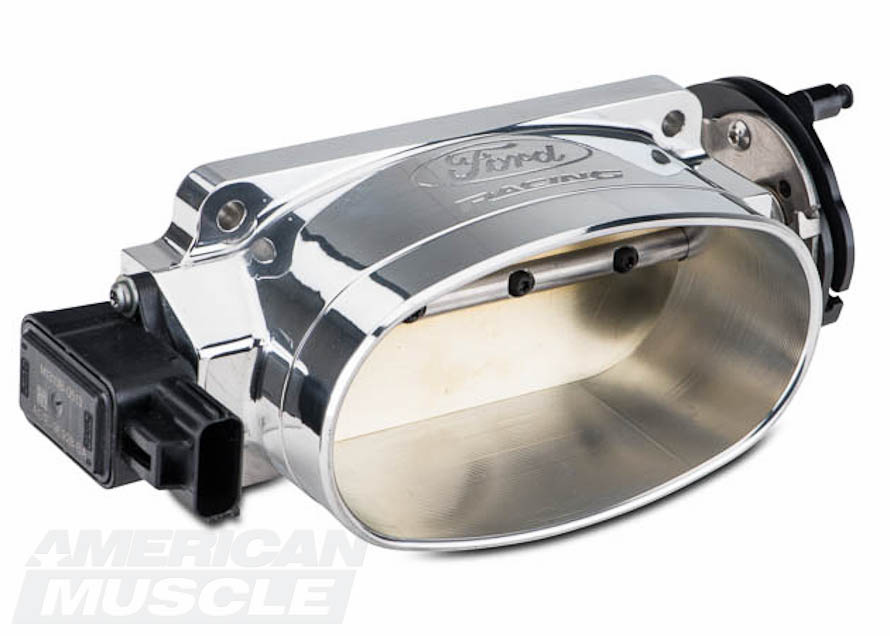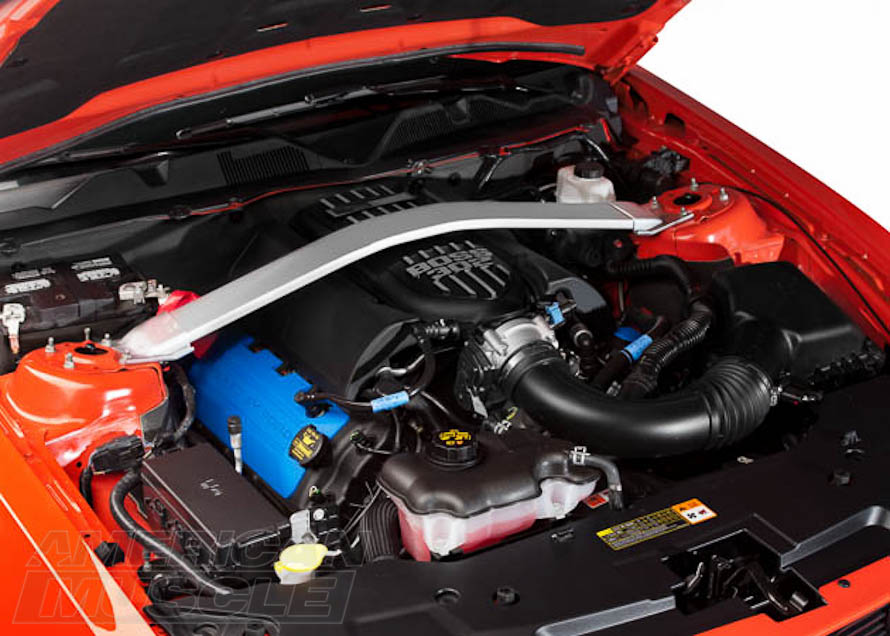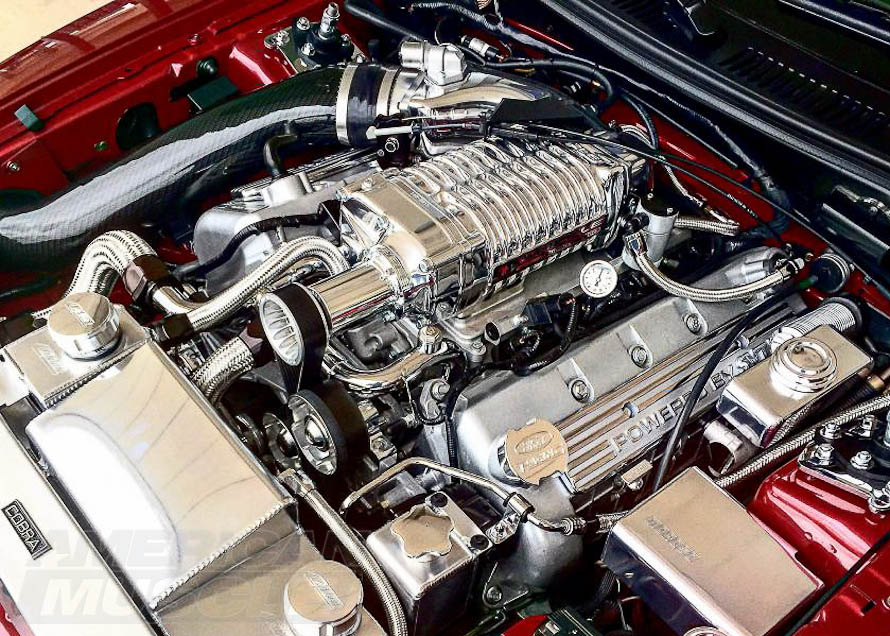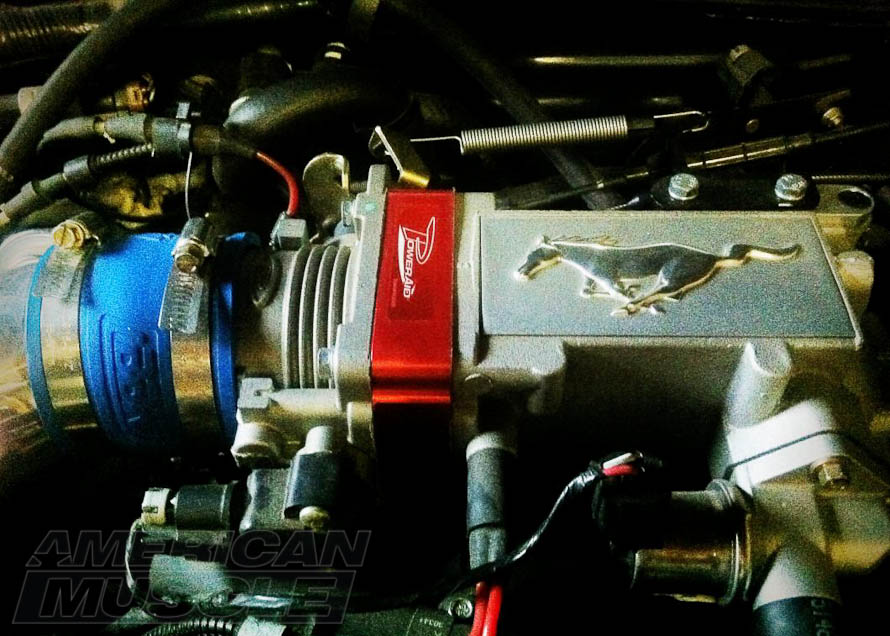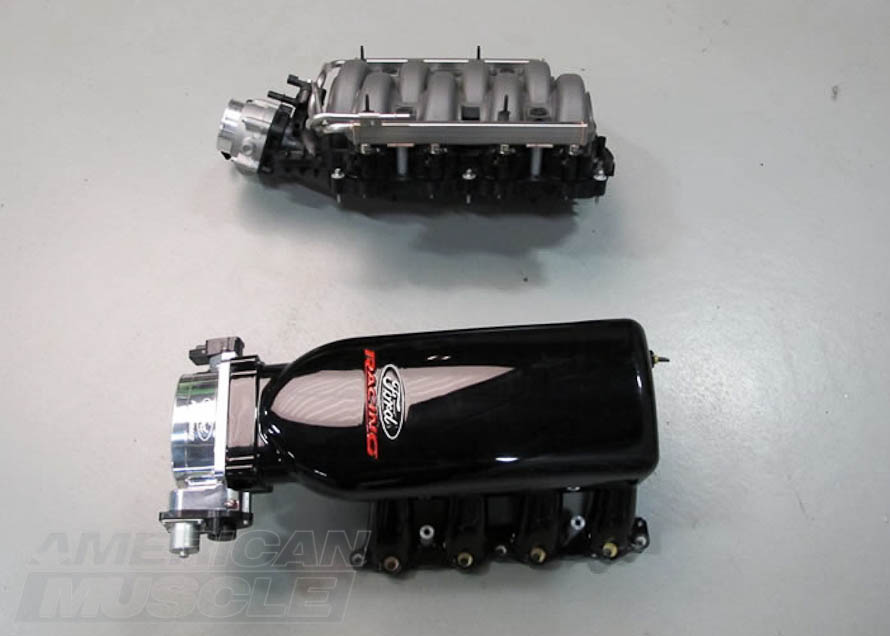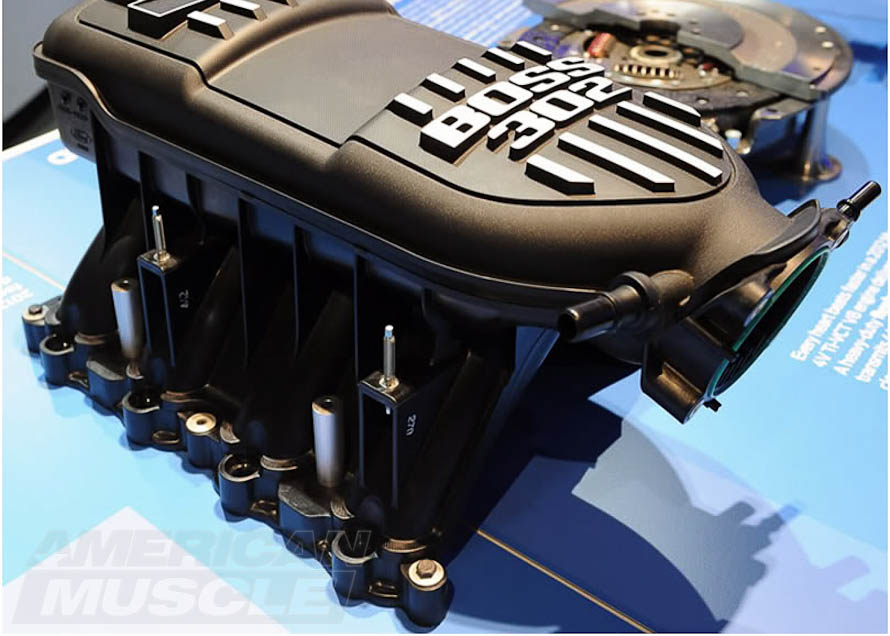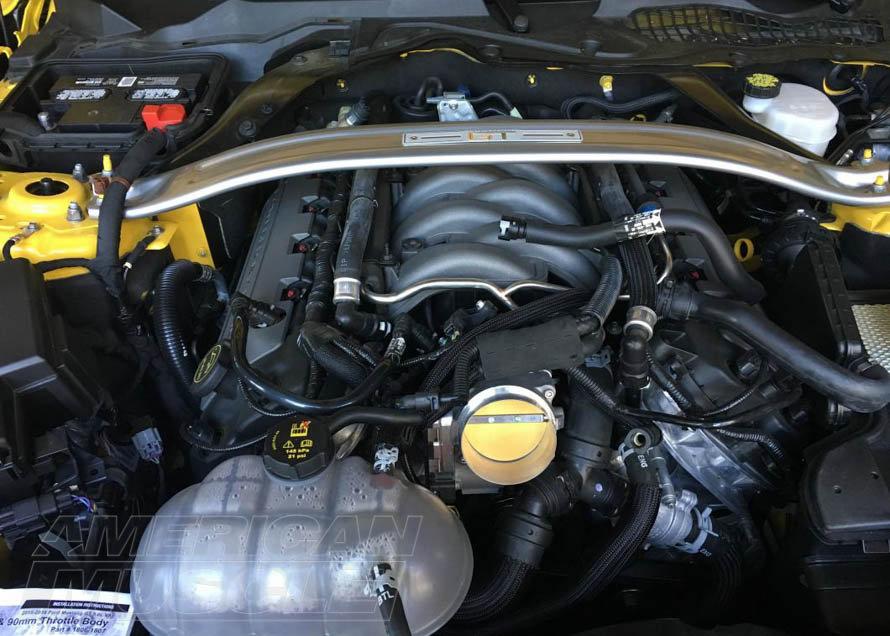As previously stated, the factory intake plenum works very well within the stock environment, however, not quite as well as the plenum provided to assist getting air into the BOSS 302. The best part about the BOSS intake plenum is it allows the GT mustangs from 11 to become visually identical under the hood to the BOSS. As an added bonus, the installation of this intake is fairly straightforward and does not require any other expensive components to be changed for the plenum to function at 100%. The clean lines and factory badges of the BOSS intake plenum make this an appealing modification not just for performance improvements, but also for those looking to improve the aesthetics under the hood as well.
As you can clearly see in this picture of the BOSS intake plenum, it has longer runners, and a top feed design for incoming air. This design allows for more air to flow into the cylinders for combustion and more power during high RPM situations, at a cost of slightly less performance down low in the RPM range when comparing it to the stock coyote plenum; typically, enthusiasts have seen an additional 27 peak HP with anywhere from no TQ loss to up to 10 TQ loss. It is also important to remember that in order to take advantage of the increased airflow the BOSS plenum provides, an aftermarket tune is required.
The Boss intake manifold is compatible with 2015 Mustang GTs as well. The Boss intake manifold is a popular choice amongst enthusiasts looking to go with centrifugal superchargers or turbochargers as it can hold 2 bars of boost, which is around 28 PSI. On the 2015+ 'Stangs, the Boss Iitake hits peak power at 7,600 RPM, but pulls all the way up to 8,000 RPM (pulling strongly from 3,000 RPM to redline). The two things holding the Boss intake manifold back is the throttle body opening and the grove in the top for a strut tower brace. Both design features limit the volume of air the Boss manifold is able to take in, and in turn can cause it to lose a little bit of torque on the low end of the RPM range.


